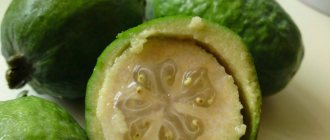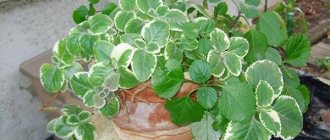General information about Arabica
Arabica is a coffee tree from the genus of evergreen plants.
This is a high-yielding tree. The main feature of its fruits is its relatively low caffeine content. Thus, a drink made from them has a gentler effect on the human body.
The plant was first described by the Swedish scientist Carl Lineus. Much later, genetic studies revealed that this type of coffee tree is a hybrid. It differs from other varieties by the presence of four chromosomes instead of two.
A genetic mutation largely determined the taste of the berries.
Origin story
Arabica arabica (Coffea Arabica) is the result of a natural crossing of two types of coffee trees: Eugenioides and Robusta. The plants grew close together, which allowed pollen from one to fall into the flowers of the other. It is believed that this happened in Ethiopia.
The mother plant was Eugenioides, and the father plant was Robusta. Their offspring became the basis for the emergence of a new species. Around the 9th century. Coffee berries became popular among warriors, shepherds and monks who operated in Ethiopia. Later the Arabs tried them. They contributed to the spread of this Arabic type of coffee.
Where does the coffee tree grow?
The natural habitat for Arabica is the vast area between Sudan, Ethiopia and Kenya. Wild coffee trees are unpretentious and are often found in mountainous areas at altitudes from 600 to 2500 m above sea level. The optimal temperature for this plant is between 15 and 25°C. Human activity has led to the spread of this type of coffee tree. Now it is grown in many countries of the equatorial belt, including:
- Venezuela.
- Salvador.
- Costa Rica.
- Cuba.
- Peru.
- Bolivia.
- Brazil.
- Colombia.
- Uganda.
- Haiti.
- Zambia.
- Rwanda.
- Tanzania, etc.
External description: flowers, fruits and seeds
This is an evergreen tree that grows up to 10 m. However, to obtain fruit it is pruned, forming a dense crown not exceeding 2 m in height. This makes the process of picking berries easier. The lifespan of the plant is 50-60 years.
It bears fruit most intensively during the first 15 years. Subsequently, the number of berries decreases. Arabica flowers bloom throughout the year. On one tree you can find not only open buds, but also green and already ripe fruits.
Arabica fruits ripen 6-7 months after flowering.
The leaves of the coffee tree have an oval-elongated shape. White flowers are located on both skeletal and peripheral branches. They appear in bunches of 5-8 pieces. Only a few of them are pollinated and form an ovary. The flowering period lasts about 2-3 days.
The formation and ripening of fruits takes about 9 months. Ripe berries acquire a red tint and a glossy shine. The pulp becomes juicy and sweet, attracting birds and animals that can become seed carriers. The stone located inside is bicotyledonous. In its raw form, it has a green-brown color.
Compound
Arabica beans have relatively low caffeine content, reaching 1-1.5%. At the same time, the level of beneficial essential oils is 18%, and sugar up to 8%.
In addition, the product contains a lot of plant fiber.
Differences between Arabica and Robusta
Arabica coffee differs from Robusta in appearance, taste and aroma:
- Arabica has oblong grains, Robusta has smaller and almost round beans;
- the “groove” located on the flat side of the Arabica grain is sinuous, similar to the Latin letter S, in Robusta it is more straight;
- Arabica contains 1–1.5% caffeine, Robusta – up to 3%;
- Arabica beans have a delicate, rich aroma (contain up to 18% essential oils), Robusta contains only 8% essential oils, its smell is less expressive;
- Arabica has a rich, rich taste, which has a specific sourness; Robusta has a very bitter aftertaste;
- Robusta is cheaper than most Arabica varieties.
Robusta is often added to Arabica blends. If there is no more than 10% robusta, this only benefits the mixture: robusta gives the coffee strength, slightly enhances the piquant bitterness and promotes the formation of a dense foam. But blends with a higher robusta content are too bitter, so they are mainly used for making coffee with milk.
Blends with 10% robusta content are good for brewing coffee in coffee makers and coffee machines. Turkish coffee is usually prepared from pure Arabica (one variety or a mixture of several).
Features of cultivation
This type of coffee tree is unpretentious, but the best yield is achieved in mountain valleys, where high humidity and temperature remain throughout the year. Under such conditions, it is possible to obtain up to 4 grain harvests per year. In addition, the chemical composition of the soil suitable for this plant has a positive effect on fruiting.
The flavor of the beans varies depending on which region they come from. When grown on poor soils in arid conditions, where a short-term temperature drop below 15°C is possible, it is possible to obtain a harvest once a year. On average, one tree produces from 2 to 5 kg of berries.
Nowadays coffee is grown on extensive plantations. Gentle hillsides are often cultivated for this tree. The plant requires systematic pruning to prevent excessive branch spread. The berries are picked manually.
Famous Arabica varieties
Typica is one of the oldest varieties, low-yielding, but loved by coffee lovers for its sweetness and purity of full-bodied taste.
Bourbon is another old variety, more productive, but also more capricious than Typica. The taste is balanced, caramel-fruity, with sourness.
Blue Mountain is an elite variety, Typica, grown in the mountains of Jamaica, at an altitude of 1200 m above sea level. Coffee has a delicate taste, unusual wine aroma and a pleasant aftertaste. 90% of the harvest is exported to Japan.
Mundo Novo is a very disease-resistant, high-yielding hybrid of Typica and Bourbon, popular in Brazil. The taste is rich, with a noble bitterness, almost devoid of sweetness.
Maragogype (Elephant Coffee) is a natural mutation of Typica. The grains are large, up to 1.5 cm in length. The taste is rich, oily, with floral and citrus notes.
Geisha is an elite Panamanian variety of Ethiopian heritage. The taste harmoniously combines berry-fruit, honey and citrus tones, and the aroma is floral.
Taste characteristics
Unlike other varieties of coffee, the berries of this plant, after processing, produce a drink with a slight sourness. Bitterness is weakly expressed. This is due to the low caffeine content.
Factors affecting taste
First of all, the composition of the soil and the climatic conditions in which the tree grew are important.
The taste of coffee depends on where the Arabica grows.
In addition, the method of collection and primary processing affects the quality. Ground coffee is less resistant to transportation than grain coffee. The taste of the product is also influenced by proper storage.
Varietal varieties
During the breeding work, more than 20 varieties of Arabica were bred. They differ slightly in taste characteristics.
Bourbon
This is the first variety to be cultivated outside its natural range. It received its name in honor of the island of Bourbon, later renamed Reunion. This type of coffee tree produces many side branches that grow at a slight angle to the crown.
The berries ripen within 5-7 months. They are fragile and not very resistant to weather changes. The color of the fruit is yellow, red and pink. This is caused by a mutation in a recessive gene. The coffee has a slight caramel flavor.
Typika
This is a classic Arabica coffee that originated in Ethiopia. The crown of the trees has a conical shape. There is a coppery sheen on the leaves. The berries have a wide oval shape. The drink has a pronounced sour taste.
Ethiopian heritage
This is a commonly found wild variety. Now it is actively grown in Latin America. The berries are processed dry. Thanks to this, the drink acquires light citrus and floral notes.
Catuai
The plant is unpretentious and resistant to environmental factors. It is grown in high mountain areas. Obtained by crossing the Caturra and Mundo Novo varieties. Red fruits are the most valuable because... their grains give the drink a more pronounced sourness.
Arabica variety Catuai is a compact plant with green leaves and medium-sized coffee beans.
Mundo novo
This variety is a hybrid of bourbon and typica. The crossing happened naturally. The tree was first identified in Brazil. It is highly resistant to disease and produces large yields. The berries ripen within 10 months. The acidity of the fruit is low. There is a faint creamy aftertaste.
Caturra
This is an Arabica variety developed in Brazil. It is obtained by fixing a natural mutation of bourbon. The variety is highly productive, but whimsical and requires the creation of special conditions. The berries have high acidity.
Geisha
A variety that is grown in Panama at an altitude of about 1400 m. It produces low yields. However, the fruits are highly valued because... have an unusual jasmine aroma.
Katimor
An Arabica variety developed in Portugal. The fruits ripen on average in 5-7 months. Gives high yields. Trees grow up to 2.5 m. Can be grown at an altitude of more than 1 thousand m above sea level.
Pacas
This variety was created as a result of a natural mutation of bourbon in El Salvador. It is characterized by high yield and good disease resistance. Valued for the pronounced acidity of the berries.
Timor
This variety was developed by crossing Typica and Robusta. It was named after the island of Timor. This species has not become widespread.
Maragogyp
A variety resulting from a mutation of the typica. They are grown in the mountains at an altitude of 1.8 thousand m above sea level. The grains are highly valued due to their special aroma and caramel taste.
History of the emergence of Arabica varieties and subspecies
Geneticists who deciphered the Arabica DNA code found that this species is the result of a cross between robusta (Coffea canephora) and eugenioides (Coffea eugenioides) that occurred in the wild. Moreover, all types of coffee known today are diploids (that is, they have 2 sets of 11 chromosomes), and only Arabica is a tetraploid with 4 sets of 11 chromosomes.
Arabica is a self-pollinating tree; pollen is carried by insects or wind. Cross-pollination occurs rarely, so breeding new varieties is extremely difficult.
But in the wild, subspecies of Arabica are sometimes found - the results of mutations and natural crossing. Such varieties are called Ethiopian Heritage and are often distinguished by unusual taste qualities. They are usually named after the settlements near which they were discovered: Dilla Alge, Irgalem, Seosias, Geisha, Rume Sudan.
When adapted to the climatic conditions of Latin America, Ethiopian varieties produce grains with even better taste characteristics than in their homeland. A striking example is the elite variety Geisha, which began to be cultivated in Panama in the 20th century.
Until the beginning of the 18th century, the Arabs strictly guarded their monopoly on coffee cultivation: not a single unroasted bean could leave the port of Moha, from where Arabica beans were exported to Turkey and Europe.
But at the end of the 17th century, the Hindu-Muslim Baba Budan, who was making the Hajj to Mecca, stole several ripe coffee beans and brought them home. Subsequently, the oldest Arabica variety, Typica, came from the trees planted by Baba Budan.
Over the next 50 years, Arabica quickly spread throughout Asia and Latin America. The Dutch took seedlings from India and set up plantations on the island of Java. The French tried several times to transport coffee trees from Yemen to the island of Bourbon, but only the third attempt was successful.
Then the French naval officer Gabriel de Cleux, at the risk of his life, delivered young Arabica trees to Martinique. Last on the list were the Portuguese, who owned Brazil. The story goes that a certain Portuguese officer charmed the wife of the French governor of Cayenne so much that she gave him several ripe coffee berries, although it was strictly forbidden to export them.
By the middle of the 18th century, coffee plantations were established not only in the mountainous regions of the mainland of South and Central America, but also on almost all the islands of the Caribbean. As a result, Arabica had to adapt to new conditions, and the tree began to mutate.
The first subspecies of Arabica was discovered on the French island of Bourbon (in our time - Reunion). If the Typica trees had young leaves with a red tint, then the “mutant” had all the leaves green. The new variety was named Bourbon. It turned out to be 20–30% more productive than Typica. Nowadays, this variety is extremely popular in Brazil.
Today, 95% of all Arabica coffee varieties grown in Latin America are developed through complex crosses between Typica, Bourbon and their descendants. Sometimes Arabica mutates spontaneously, as happened with the Caturra variety discovered in Brazil in the 1940s. It produces even more abundant harvests than Bourbon.
Features of roasting beans
There are many ways to process coffee beans. They help preserve the properties of the product and increase the shelf life of raw materials.
Four degrees
There are 4 degrees of roasting of coffee beans:
- Light - involves frying raw materials until a light golden brown color appears. With this processing, the product most fully retains its mild taste and characteristic sourness.
- Medium - when processed, the grains acquire a dark shade. A slight oiliness should appear on the surface of the raw material. The drink has a moderate taste.
- Strong—the beans are roasted until they turn black. There is a slight burning smell. Because of this, the drink has a characteristic bitter taste.
- Extreme - the grains are fried until charred. The drink has a black color, a burning smell and a bitter taste.
Three modern technologies
Relatively recently, 3 new processing methods have emerged that help preserve the natural taste of grains:
- Thermal. The technology involves filling 2 tons of raw materials into a special drum. It is set in motion. In this case, heat treatment is carried out with air heated to 200°C.
- Dielectric. The technology involves placing grains in a special apparatus, where the raw materials are exposed to frequency waves.
- Infrared. In this case, the coffee is processed using infrared waves. Using a special program, a special pressure and temperature regime is set. During processing, the grains increase in size, but their taste does not change.
Seven classic ways
The classic methods of processing coffee beans include:
- French.
- Viennese.
- Scandinavian.
- Italian.
- American.
- Cinnamon.
- Urban.
Coffee selection criteria
When purchasing, you need to be guided by your taste preferences. It is best to purchase products in grains and grind them at home.
It is recommended to buy Arabica beans and grind them yourself at home.
A drink made from light to medium roast coffee has a richer taste. The product of strong and extreme heat treatment has a strong taste and smell, so it is not suitable for everyone.
It is important that the country and production date are indicated on the packaging.











